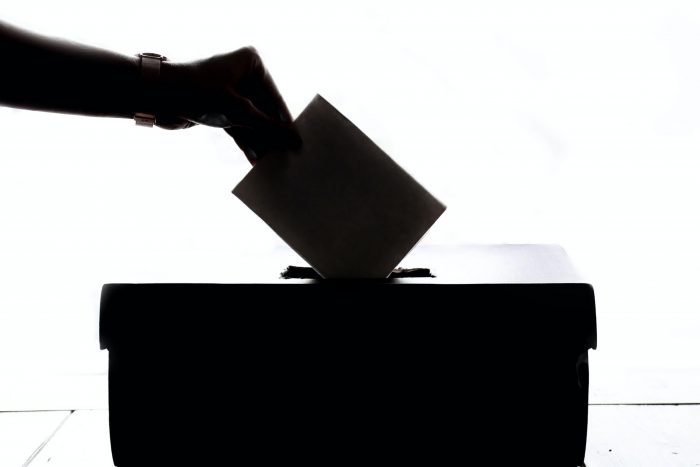The culmination of the 2020 U.S. general election was every bit as messy as it promised to be, and the Jan. 6 insurrection that left five people dead and dozens injured exposed the biggest threat facing U.S. elections. It’s not cybersecurity, or foreign interference, either; it’s the idea that the credibility of election results may no longer be a given.
That assessment on its face seems to be at odds with the fact that the more than 80 million votes cast in the 2020 election set an all-time record: why would electors bother to vote if the result is a foregone conclusion?
But alarm bells are ringing in the offices of national and local experts across the country. They agree that the erosion of faith that elections will be carried out impartially is a major—if not the major—cause for concern around election security today. And though it won’t happen overnight, technology might be able to restore that faith.
To Brian Kruse, the top election official in Douglas County, the most populous county in Nebraska, the loss of faith among the electorate is paramount to any other election issue today. It’s an issue Kruse says will be felt by far more than the county’s estimated 571,327 residents.
“The number-one issue is that we have just got to ensure we run free and fair and honest elections and that the public has trust and confidence in our election systems not just locally, but nationally,” Kruse said. “If your citizens don’t trust in your election system, that’s the foundation of your democracy.”
That isn’t to say that other challenges don’t exist; they most certainly do.
Technological challenges like the continued use of entirely paperless voting machines and cybersecurity weaknesses in state and local government IT networks persist. Those entities have been increasingly targeted by ransomware attacks in recent years.
Major structural challenges also represent threats to free elections. Among structural challenges identified by Harvard University’s nonprofit Electoral Integrity Project: gerrymandered boundaries and electoral laws that favor incumbents; campaign coverage that lacks fairness and balance; and amplification of misinformation on social media.
But fast-forward through four years of a seeming daily deluge of challenges to democratic norms, and the key lesson from 2020 to emerge is that the security and accuracy of election results does not live in a vacuum—they must be received by an increasingly skeptical public.
So what role does technology play in mitigating that skepticism?
The way J. Alex Halderman sees it, one simple and effective solution is to ensure that a paper trail of election results exists. Halderman, a University of Michigan computer science and engineering professor and an expert on election security, estimates that approximately 15% of the U.S. electorate cast completely paperless votes in the 2020 general election in precincts in Indiana, Kansas, Kentucky, Louisiana, Mississippi, New Jersey, Tennessee, and Texas. States are making progress on decommissioning entirely paperless systems, but there remains work to be done, Halderman said.
According to Election Systems & Software spokesperson Katina Granger, systems manufactured by the Omaha-based election technology company “support evidence-based elections” to the tune of what Halderman suggests.
Granger said ES&S voting systems feature six layers of security that include physical security, encryption, and the generation of verifiable audit trails.
“All ES&S voting systems maintain a system-generated audit trail used to verify that elections are administered accurately and accountably, cataloging the date, time and description of every user- or system-initiated event that occurs on the unit,” Granger said. “Tabulation equipment is also capable of capturing screen images of every ballot scanned.”
Like other manufacturers of voting machines, ES&S consulted with the Department of Homeland Security’s Cybersecurity & Infrastructure Security Agency ahead of the 2020 elections to ensure a smooth result. But it was by no means a one-and-done exercise, Granger said.
“What many people don’t realize about elections is that they happen just about every Tuesday somewhere in America. ES&S has a team of account managers assigned to every state we work in, working side-by-side with local election officials for months leading up to elections,” she said.
ES&S does not manufacture internet-based voting platforms, and Granger declined to speculate about the future of voting via the internet.
But proponents of blockchain-based voting platforms point to the democratic nature of the distributed ledger technology that they say tilts the power dynamic away from appointed or elected election administrators and toward the masses. Blockchain’s lack of centralized control enables users to collectively network, review, and validate a database—in other words, it provides “auditable consensus among parties who do not fully trust one another,” as a 2018 report in Scientific American phrased it.
While that all sounds good in theory, a team of researchers at Massachusetts Institute of Technology recently argued that there are too many potential weaknesses that threaten to hamstring such a platform in practice.
“Online voting systems are vulnerable to serious failures: attacks that are larger scale, harder to detect, and easier to execute than analogous attacks against paper-ballot-based voting systems,” the MIT researchers wrote in their post-election draft of a paper called “Going from Bad to Worse: from Internet Voting to Blockchain Voting.”
“Furthermore, online voting systems will suffer from such vulnerabilities for the foreseeable future given the state of computer security and the high stakes in political elections. While convenience and efficiency are essential properties of election systems, just as security is, these goals must be balanced and optimized together. An election system is ineffective if any one of these goals is compromised.”
Halderman at the University of Michigan was more terse about the democratizing promise of internet-based voting systems.
“Voters should absolutely avoid voting online if any alternative is available,” he said. “It’s much safer to vote by mail than to cast your vote over the internet under any circumstances.”
—
This article was written by SPN contributor Cole Epley. Cole is a freelance journalist and aspiring bicycle tourist living in Council Bluffs, Iowa. His award-winning business reporting on topics including energy and utilities, banking, payments and real estate has been published in the Omaha World-Herald and affiliates, as well as in the Memphis Business Journal and American City Business Journals affiliates.




